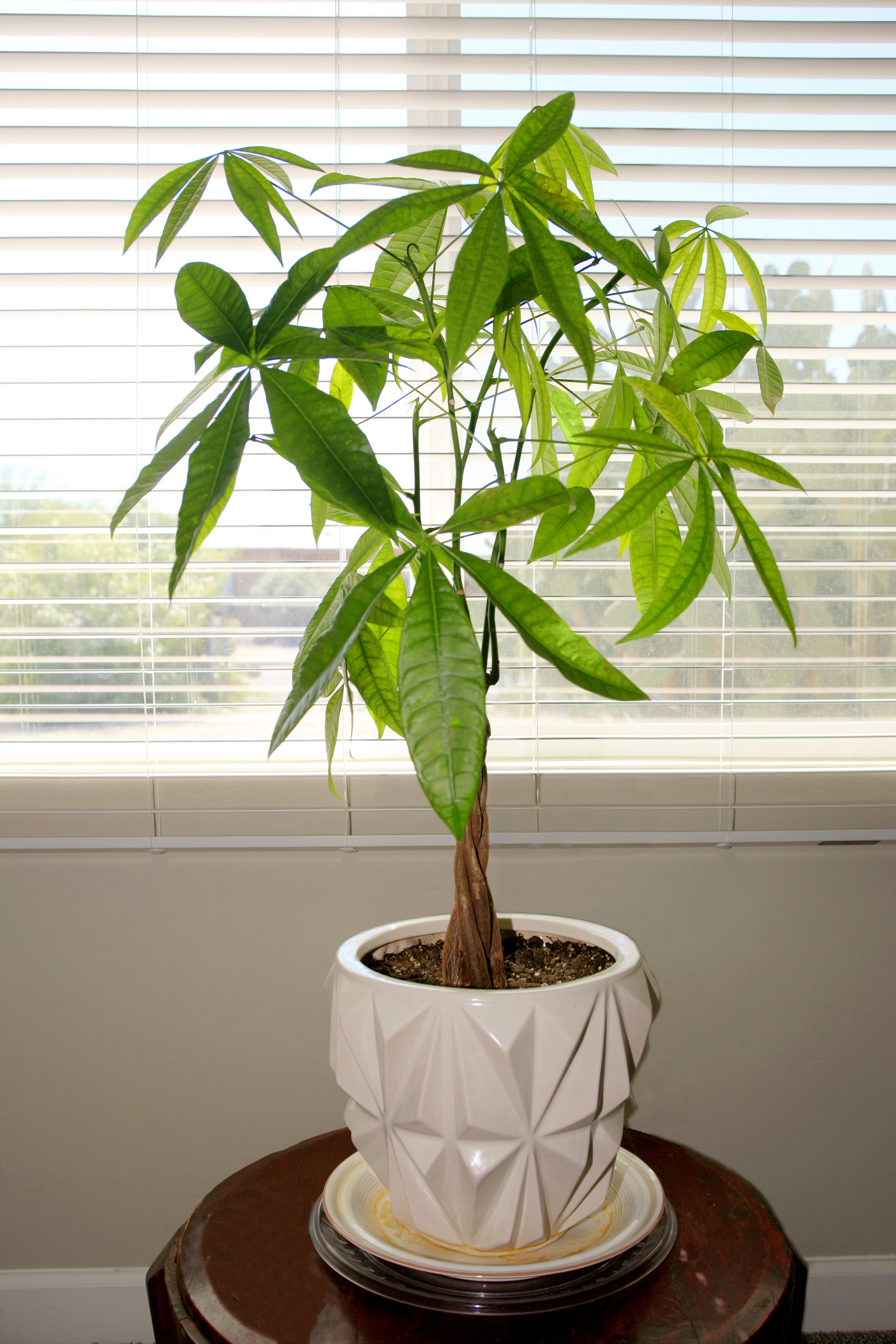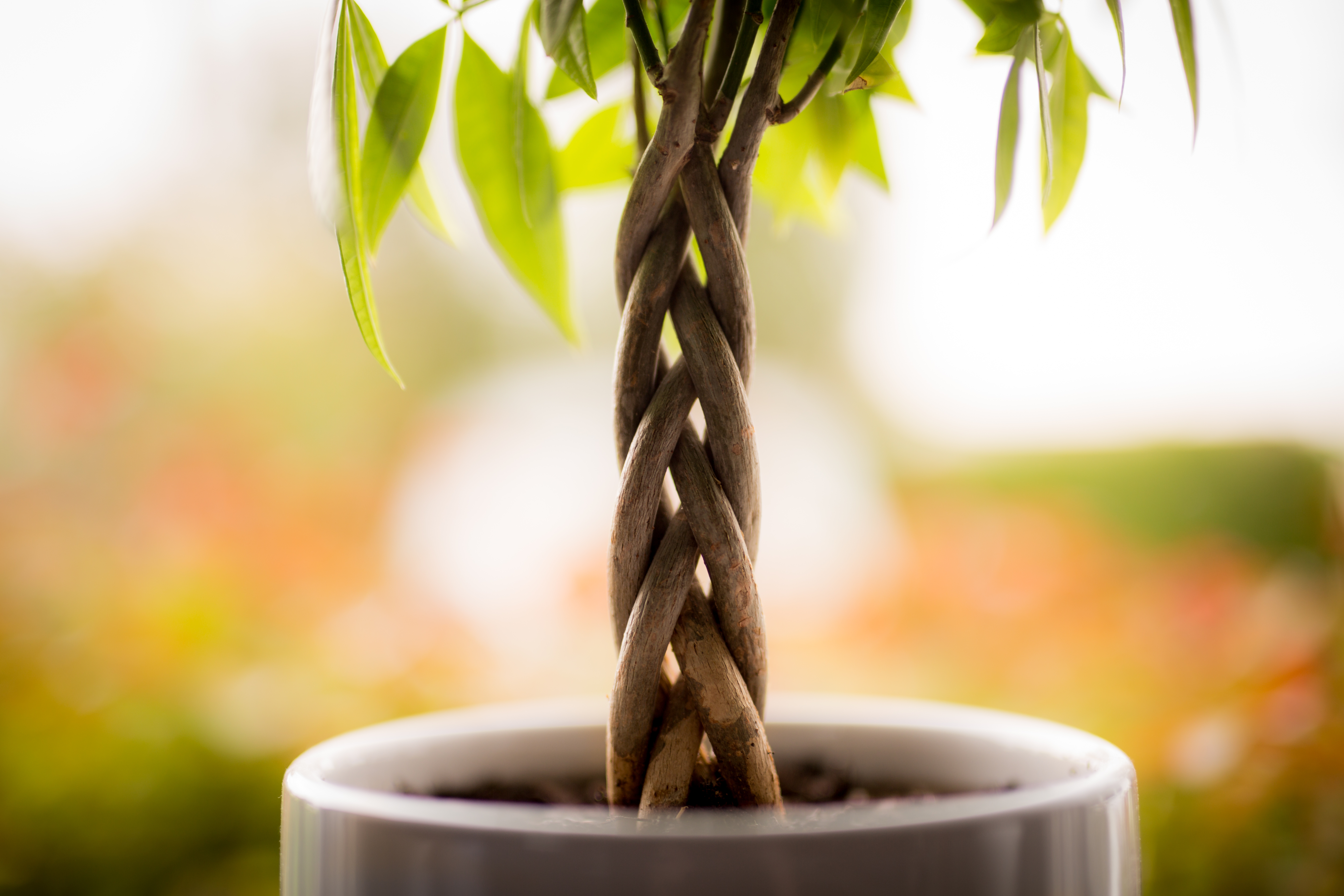Origin
The Money tree, Pachira aquatica, is a popular houseplant that is also commonly known as a Braided Money Tree due to its characteristic interwoven trunk. This braiding doesn't occur naturally, but has become traditional in order to help 'hold in the luck' (more on this later) and helps save space as well as looking great!
These trees are native to the wetlands of the Central and Southern Americas, and its first mention can be traced back to 1775.

Care
Due to their origin in the wetlands, these plants are much more tolerant of overwatering than other plants, so if you're known to be a chronic overwaterer then this may be the plant for you!
However, it's still, of course, never a good idea to overwater your plants, and even this one will eventually die if left in excessive amounts of water for long periods of time, so still make sure to be careful with it. This is especially important in the winter time, when growth is slower and therefore the water need is reduced.
They can grow very large, and will continue to grow if you give them the chance. If you're limited on space or just don't want an excessively large plant, you should avoid repotting it into a larger pot. Note that it can still be beneficial to repot your plant every now and then to give it some fresh soil - just repot it back into the same pot if you want to prevent it from expanding in size.

Other
In their native habitats, they can get up to 60 feet / 18 m and can produce oval green pods with seeds inside.
Although they can produce fruits and flowers in their natural environment, it's unfortunately very unlikely that you will be able to replicate this indoors.
Money Trees are also widely recognized as non-toxic, so they can be a good pet-friendly option to have in your home.
The 'Money Tree' name comes from the fact that this plant is often considered lucky. This is partially due to the number of leaves they typically have - five - which is considered a lucky number in some cultures, as well as due to its rumored origin story where a poor farmer is said to have found the plant and changed his fortune by selling its seeds. So, some people believe that keeping one of these plants in your home can help improve your financial situation, as well as perhaps your overall good fortune too.
It's additionally believed by some that braiding the trunk can help to 'seal in' the luck, although more likely it's just for aesthetic/ practical reasons. Then again, you never know! Note that if you want to keep the braid formation intact over time, you'll need to position any new shoots while they're still bendable, as they won't continue braiding of their own accord.